Top 100 Children’s Novels (#70-66)
First off, Eric Carpenter has just released the trends and results of this poll from 100-71 and it is fascinating. When you look at the decades of the winners in particular . . . well, I was shocked by which decade was in the lead, frankly. So before you do anything else, look at his charts. Wow!
You know, I’ll say this for the list; you never know what to expect. It really is a mix of what kids like today, what kids liked from yesterday, what adults like today, and what adults liked yesterday. Today’s list is a definite mix of these four elements and it includes only one award winner and one surprise book that I doubt anyone, even the author, could have seen included. Hold onto your hats, folks! It’s gonna be a bumpy ride.
ADVERTISEMENT
ADVERTISEMENT
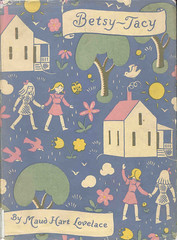
#70 Betsy-Tacy by Maud Hart Lovelace (1940)
(#1)(#2)(#3)(#3)(#3)(#4)(#7) – 54 points
I didn’t read these books until I was an adult but I fell in love with them. – Paige Ysteboe
This is where it starts (and where I first met them), so I have to include this volume for younger readers. (But really, I love the high school books the best, and I probably read Betsy’s Wedding every single year.) – Lori Erokan
A deceptively simple book about the joys of friendship and being five, this book manages to make the death of a baby sister seem like perfectly reasonable subject matter in a book for young children. – Wendy Burton
It’s wrong that I never read one of these as a kid, isn’t it? But honestly, though my name was Betsy, I sort of eschewed any books that toted my moniker. Understood Betsy. Betsy and the Boys (note to self: Use this title in a blog post at some point). And, best known of all, Betsy-Tacy. Actually, I didn’t even know about these books as a kid. It wasn’t until I started taking classes in children’s literature so as to get my MLIS degree that I discovered the name Maud Hart Lovelace at all.
The description of this book from the publisher reads, "There are lots of children on Hill Street, but no little girls Betsy’s age. So when a new family moves into the house across the street, Betsy hopes they will have a little girl she can play with. Sure enough, they do–a little girl named Tacy. And from the moment they meet at Betsy’s fifth birthday party, Betsy and Tacy become such good friends that everyone starts to think of them as one person–Betsy-Tacy. Betsy and Tacy have lots of fun together. They make a playhouse from a piano box, have a sand store, and dress up and go calling. And one day, they come home to a wonderful surprise–a new friend named Tib."
By the way, I’ve been a Betsy all my life and in that time I have never EVER met a Tacy. Not one. No Tibs either, now that I think of it.
According to Anita Silvey’s 100 Best Books for Children, the books in this series (Betsy-Tacy was the first of ten) were always based on Lovelace’s own childhood growing up in Mankato, Minnesota. She would tell her own daughter stories of growing up there, later writing them down. Then, "Lovelace submitted Betsy-Tacy to a publisher’s children’s book contest, but it failed to win. She then became a client of the New York literary agent Nannine Joseph, who also represented the illustrator Lois Lenski. Joseph asked Lenski to prepare illustrations for the book, and Lenski then brought the book to her longtime friend, the editor Elizabeth Riley. In 1940 the first of the ten-book Betsy-Tacy series appeared." She also would set three additional books in the same location (called Deep Valley a.k.a. Mankato, Minnesota): The amusingly titled Carney’s House Party (1949), Emily of Deep Valley (1950), and Winona’s Pony Cart (1953), are all to be re-released as well. Mitali Perkins writes the forward for Emily of Deep Valley.
It’s fun to compare and contrast what did and did not happen in Maud Hart Lovelace’s life that is reflected in the books. Her entry in Contemporary Authors Online states that, "Lovelace did live in a small yellow house on a street that ended at a big, green hill. Her father (like Betsy‘s) owned a shoe store, but later became the treasurer of Blue Earth County. Her sisters, Kathleen and Helen, appear (slightly disguised) in the books as Julia and Margaret. Kathleen, who studied singing, performed in many concerts and operas, and Helen, the youngest, became a librarian. Almost all her characters were based on old friends."
A proto-feminist? Could be. In Feminist Writers Norma C. Noonan suggests that Lovelace, "can perhaps best be described as an unconscious feminist for most of her life. Growing up in the era of the suffrage movement, she supported the feminism of the suffragists through the words of her alter ego, Betsy Ray. . . . one realizes that Betsy and her sister Julia have aspirations far exceeding the typical women of their day. Lovelace . . . created characters whose dreams and ideals inspired women to greater heights . . . Betsy becomes a writer, Julia an opera star, Carney finishes Vassar, and Tib finds a career in fashion design. That diminutive blond is particularly disdainful of men who prize her delicate looks rather than her accomplishments."
Now I mentioned in the post about The Thief (#83) that the fans were dedicated. But even the biggest Sounis follower can’t hold a candle to a Betsy-Tacy lover. Heck, they have not just one society but TWO! There’s the Maud Hart Lovelace Society and the Betsy-Tacy Society. So again, I’m grateful they didn’t know about this poll at the time or the results might have led to numbers 1-10 being every last Betsy-Tacy book printed.
Author Meg Cabot is one of the better known Betsy-Tacy fans out there. First she went to visit the town itself in conjunction with the tri-annual Betsy-Tacy Convention. Mankato reported on her speech at the convention, and there was a great article about her trip in PW called Betsy, Tacy, and Meg Meet in Deep Valley. Then she wrote the article What Little Girls Are Made Of in the Wall Street Journal online. That’s dedication.
Periodically the books go out-of-print, only to be rescued once again. For example, in 2006 some of the later books were unavailable. That all changed in 2009 when Harper Perennial Modern Classics rereleased the last six books in pairs and included such additional details as little forewords by writers who liked the books.
- Read some of the first book here.
- Broadway star Sutton Foster reads some of the audiobook here.
- This would be the reading guide.
- Sadie Stein had a rather touching ode to Betsy-Tacy in Jezebel, not so long ago.
- The aforementioned Betsy-Tacy Society is very good at keeping up on all the pertinent Betsy-Tacy news that’s out there. I am impressed.
- The television show Hometime TV even did an episode about the gutting and repair to the framing of the original Betsy house. Can’t find it online, though.
- Mankato, Minnesota is home to all things Betsy-Tacy. Fun and Random Fact: It’s also where the movie Juno was set.
Funny thing about the covers . . . not that many out there. Huh.
Also funny that there’s never been an Avonlea-type adaptation of the novels.
Interested in visiting Mankato itself? Quite a few folks did in 2009. This video tells a bit about it.

#69 The Mysterious Benedict Society by Trenton Lee Stewart (2007)
(#1)(#3)(#4)(#5)(#5)(#5)(#6)(#8)(#8) – 54 points
Perfect team of brilliant misfits, plus Carson Ellis’ spot illustrations were spot-on – Amy Farrier
Four kids are recruited into a private school for criminal masterminds. Though it isn’t the easiest book in the world to read, if you hit it at the right time – it could be the most memorable. – Heather Meagher
Did I ever tell you about the time I was invited to a lunch with Trenton Lee Stewart prior to the publication of The Mysterious Benedict Society and I forgot all about it? Long story short, I’m a jerk, but if it’s any consolation I’ve paid for it over the years. This book is probably one of the most popular in my own library. Kids are constantly checking it out and recommending it to one another. I’d say that this is a true word-of-mouth title. Plus, it’s one of the rare popular books to delve into science fiction, almost refuting the theory that sci-fi doesn’t sell well to kids.
The plot from the publisher reads, "Dozens of children respond to this peculiar ad in the newspaper and are then put through a series of mind-bending tests, which readers take along with them. Only four children-two boys and two girls-succeed. Their challenge: to go on a secret mission that only the most intelligent and inventive children could complete. To accomplish it they will have to go undercover at the Learning Institute for the Very Enlightened, where the only rule is that there are no rules. But what they’ll find in the hidden underground tunnels of the school is more than your average school supplies. So, if you’re gifted, creative, or happen to know Morse Code, they could probably use your help."
Does the book handle themes and issues larger than your average children’s novel? In the Journal of Adolescent and Adult Literacy, Judith A. Hayn writes, "The book also addresses issues of loneliness, friendship, fear of failure, belonging, and family as well as mind control, greed for power, and violence. Is our society facing a real Emergency, of the sort described in the book, that perhaps only the innocence of children can surmount?"
The books were recently in the news when folks started to notice that the character of Sticky Washington, who is black, kept showing up as white on the covers. SLJ reported on the fact here. Little Brown’s response was, "We are in the process of addressing the inaccuracies and look forward to offering readers a more faithful rendering of this character in our popular series in the near future." So that’s all good. No word on how quickly they’ll also change the Sticky on the website, though. He’s very white there as well.
As of this post there are only two sequels to the book. One is The Mysterious Benedict Society and the Perilous Journey (2008). The other is The Mysterious Benedict Society and the Prisoner’s Dilemma (2009).
Should someone wish to replace the illustrators Carson Ellis or Diana Sudyka, might I suggest you check out this young woman, Alyse Poole.
Before you Benedict purists get huffy, Sticky is carrying his glasses, so don’t you fret (you should see the artist’s Sherlock Holmes too, if you get a chance).
- There’s a fancy dancy website for the series here. There are lots of fun interviews and games there.
- And you can read an excerpt of the book here.
Publishers Weekly said of it, "Though the book is lengthy, readers will likely enjoy getting lost in this fully imagined realm."
VOYA was more enthusiastic with, "Stewart’s style is reminiscent of authors such as Cornelia Funke or Garth Nix. His writing is clear, intelligent, and respectful of his audience. He maintains the suspense brilliantly and introduces a subtle horror in the children’s situation in the school that is chilling yet not overwhelming. He laces the narrative with subtle humor on all levels. The characters are well developed, mostly appealing, and evenhanded. Ellis’s line drawings add a crowning flair. Do not miss this one. Buy two copies because they will be needed. "
Said School Library Journal, "Fans of Roald Dahl or Blue Balliett will find a familiar blend of kid power, clues, and adventure in Society , though its length may daunt reluctant or less-secure readers. Underlying themes about the power of media messages and the value of education add to this book’s appeal, and a happy ending with hints of more adventures to come make this first-time author one to remember."
And finally Kirkus said, "Low in physical violence, while being rich in moral and ethical issues, as well as in appealingly complex characters and comedy sly and gross, this Lemony Snicket-style outing sprouts hooks for hearts and minds both-and, appropriately, sample pen-and-ink illustrations that look like Brett Helquist channeling Edward Gorey."
Not many different covers of the book exist yet, but there are these two:
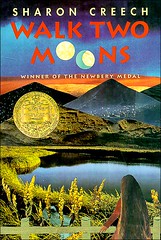
#68 Walk Two Moons by Sharon Creech (1994)
(#1)(#1)(#3)(#3)(#5)(#7)(#7)(#9)(#9) – 54 points
Why? Voice, character, suspenseful and intricate plot. – Sarah Sullivan
This book is a force to be reckoned with. It is as close to perfection as possible. It should be studied by writers for its impeccable use of voice, characterization, and plotting. Sometimes I still hear Salamanca’s voice in my head. Funny, haunting, authentic, compelling, it is on my all-time permanent top 10 books list. When people balk at my devotion to children’s literature, this is my trump card. – Vikki VanSickle
And with this book, Ms. Creech makes her second appearance on the Top 100 list (the first being Love That Dog at #75). Back in 2001 she once said that "Walk Two Moons seems to be the one most frequently taught," but there are plenty of children’s chapter books taught out there that never made it to this Top 100 list. Clearly, there’s gotta be more to it than that.
The plot as described by School Library Journal reads, "13-year-old Salamanca Tree Hiddle travels west with her Grams and Gramps to Lewiston, Idaho, the destination from which her mother did not return. As Sal entertains her grandparents with stories of her friend, Phoebe, who sees "lunatics" around every corner, threads from many life stories are seamlessly entwined. This pilgrimage wonderfully mirrors the journey of discovery that is adolescence, as Sal’s search for the truth about her mother becomes a journey of discovery about much more."
We can credit the appearance of all the books on this Top 100 list to a lot of things, but this may be the first one that came about because of a message in a fortune cookie. When she was 12, Sharon and her family took a road trip that was later re-created in Walk Two Moons. That was part of her inspiration. In an interview with Reading Teacher (Feb. 1996), Ms. Creech recalled yet another: "When I began to write, I was living in England and I was missing the States. I was also missing my grown children who had just gone off to college there. I wrote Walk Two Moons from the notion of a parent/child separation, and I decided to do it from the child’s point of view. These were the kinds of things rolling around in my mind." When asked about the structure, she gave an answer that should be heartening to those folks trying to write in today’s book economy: "Part of the way Walk Two Moons turned out was the result of the economics of publishing at the time I was writing the book. There was a recession going on in that industry [in the U.S.] and in England and editors were being very selective." The writing was hard, her editors changed, and "I was ready to toss it into the trash–and then I got the message in the fortune cookie." The cookie merely read: "Don’t judge a man until you’ve walked two moons in his moccasins." She had her hook. We have her book.
By the way, I rather like this statement in the same article about winning the Newbery and how it changes your life. "I still don’t know how I feel about it. It’s like someone has given me this beautiful suit of Armani clothes. Normally I would not wear them. They look nice and everyone admires them, but I’m a little uncomfortable in them. I like to wear them for brief periods of time and then change back to my blue jeans."
When asked by Teacher Librarian (April 2001) the extent to which she places people she knows in her books, Creech confessed that, "Usually I am not aware that I am drawing on family when I am writing. It is only after a book is done that I sometimes see some of the sources. For example, it was after Walk Two Moons was published that I recognized that Gram contained pieces of my mother, grandmother and sister (goodness spiced with a little sass), and that Salamanca seemed to contain bits of my daughter and of me (lyrical, stubborn, outdoor-loving)."
In an ALAN Review article called "Popular Postmodernism for Young Adult Readers" (Spring/Summer 2002), Stephenie Yearwood says that, "this story is made of stories, by stories, and in between stories." As a result Sal has to reinvent herself so as to handle the truth. "Sal’s past is reconsidered, remade and retold in multiple layers here; and it can emerge fully only when she has successfully constructed a new identity for herself–an identity which can face the history." And though we wouldn’t necessarily think of this book as a mystery novel, discovering what has actually happened to Sal’s mom is something we, the readers, want to figure out.
Fun Fact: Later Ms. Creech would set her novel Chasing Redbird in the same town as Walk Two Moons (Bybanks, Kentucky).
The book won the 1995 Newbery Medal, beating out Catherine, Called Birdy by Karen Cushman and The Ear, the Eye and the Arm by Nancy Farmer.
- Read some of the book here.
- The page on the Sharon Creech website about the book is here.
- The Multnomah County Library system has some of the best book discussion guides you will find. Here is the one they created for Walk Two Moons.
- Use these discussion questions and activities if you like.
- Or you can use this Teacher Guide.
- The theatrical version of the book was big enough to get some attention from Variety.
- Sometimes I like children’s versions of their favorite books best.
- Though admittedly there are times when folks get a little literal (shouldn’t those feet be wearing moccasins, anyway?).
School Library Journal said of the book, "While this story-within-a-story is a potentially difficult device, in the hands of this capable author it works well to create suspense, keep readers’ interest, and draw parallels between the situations and reactions of the two girls. Sal’s emotional journey through the grieving process-from denial to anger and finally to acceptance-is depicted realistically and with feeling. Indeed, her initial confusion and repression of the truth are mirrored in the book. Overall, a richly layered novel about real and metaphorical journeys."
Said Booklist, "The novel is ambitious and successful on many fronts: the characters, even the adults, are fully realized; the story certainly keeps readers’ interest; and the pacing is good throughout."
Kirkus was less pleased, saying, "Creech, an American who has published novels in Britain, fashions characters with humor and sensitivity, but Sal’s poignant story would have been stronger without quite so many remarkable coincidences or such a tidy sum of epiphanies at the end. Still, its revelations make a fine yarn."
And finally there was The Observer who said it was, "A really satisfying book – funny, poignant, cunning in the unraveling of its mysteries."
Unlike her Love That Dog, covers of this particular Creech outing abound.
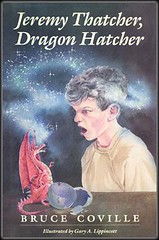 #67 Jeremy Thatcher, Dragon Hatcher by Bruce Coville (1991)
#67 Jeremy Thatcher, Dragon Hatcher by Bruce Coville (1991)
(#2)(#2)(#4)(#5)(#5)(#5)(#8)(#8)(#8)(#9)(#10) – 55 points
BAM! Betcha you didn’t see that one coming, eh? Or maybe you did. Maybe you realized that this list was strangely Covilleless until now. Well, I’ll admit that this was a surprise to me, but both kids and adults voted in droves for it so onto the list it goes!
The description of the plot from the publisher reads, "If Howard Morton and Freddie the Frog Killer were trying to hold you down so that Mary Lou Hutton could kiss you, you might run as fast as Jeremy Thatcher did the day he stumbled into Mr. Elives’ Magic Shop. And if you stumbled into that strange shop, you, too, might be asked to make a choice. What would you buy? The Chinese rings? The Skull of Truth? Or the dragon’s egg? And if you did buy the dragon’s egg, what would you do when you found out you were supposed to hatch it?"
Mr. Coville himself is probably not too surprised that of all his book, this is the one on the list. As he says on his website, "If I had to guess which of my books would still be around in 25 years, I’d put my money on Jeremy Thatcher, Dragon Hatcher. But writing the book was a real challenge, and it took a long time to develop. I first got the idea for Jeremy back in 1982. That was when I published THE MONSTER’S RING, the first book to use Mr. Elives’ Magic Shop. I liked the shop so much that I thought it would be fun to write other stories that got their start with a kid buying some strange item from this strange store. My first thought was to make a book of short stories called Tales From the Magic Shop, and one day I made a list of about a dozen ideas for stories for this book. But the truth is, I am more a novelist than a short story writer, and every time I tried to write one of these ideas, it would get out of hand. The first version of Jeremy Thatcher, Dragon Hatcher was called ‘The Dragon’s Egg’, and before I even finished it, I could tell that it was going to be much longer than I had intended. I started dividing it into chapters, thinking that perhaps it could be the ‘anchor story’ for the collection, maybe thirty or forty pages long. But it insisted on being a book. It took me thirteen drafts to get to the final version."
How did he become one of the most prolific fantasy and science fiction writers for kids? In Contemporary Authors Online, Coville is quoted as saying that his father was instrumental in his eventual occupation. "He was a traveling salesman, a gruff but loving man, who never displayed an overwhelming interest in books. But if anyone was to ask me what was the best thing he ever did for me I could reply without hesitation that he read me Tom Swift in the City of Gold. Why he happened to read this to me I was never quite certain, but it changed my life. One night after supper he took me into the living room, had me sit in his lap, and opened a thick, ugly brown book (this was the original Tom Swift) and proceeded to open a whole new world for me. I was enthralled, listened raptly, waited anxiously for the next night and the next, resented any intrusion, and reread the book several times later on my own. It was the only book I can ever remember him reading to me, but it changed my life. I was hooked on books."
- Dare you doubt the power of this book? Behold! It causes people to get tattoos of the characters. I kid you not.
- Librarians are pretty lucky. We have our own action figure. But you know who else has his own action figure? Bruce Coville.
School Library Journal said of it, "Jeremy and his friends are believable characters; their actions and reactions are typical of the children’s age. Once again, Coville offers a fantasy that younger readers can handle easily, and one in which dragons really exist for a little while."
Reviewer Kathleen Redmond wrote in the Voice of Youth Advocates that the story is a good combination of real and fantasy worlds and "is right on target."
And Kirkus called it, "A funny, enjoyable, imaginative story…”
The covers for this book have steadily improved with every new version:
And from what I believe may be Germany . . .
You readers may have noticed by now that I love including art from up-and-coming illustrators if they have, at any point, done their own versions of the books on this list. I did it with Pippi Longstocking, with The Witches, with today’s Mysterious Benedict Society, and now I’m doing it with Jeremy here. Atlanta-based artist Jeremy D. Evans recently wrote on his blog, "My absolute favorite kids’ book of all time is Jeremy Thatcher, Dragon Hatcher by the incredibly talented Bruce Coville. If you’ve never read it before, I highly recommend that you take some time and read this great story. I love it for several reasons: the creative storyline and general concept, of course; the fantasy element; the illustrations; and the personal connection I have with the main character (a boy named Jeremy who loves to draw)." So he set about drawing it. Some of the posts on the topic are here and here and here. Some of the sketches:

#66 Henry Huggins by Beverly Cleary (1950)
(#1)(#1)(#3)(#5)(#5)(#5)(#6)(#6) – 56 points
This is my # 1 because it’s the book that made me love reading (I read it over & over when I was 8 years old & each time I read it I thought it was hilarious – and I still do) – Marci Dressler, Children’s Librarian, Ossining Public Library, Ossining, NY
I adored these books. They were the first ones that made me realize how much fun reading could be. I don’t want to split the vote by voting for one title – all of the Henry Huggins, Beezus and Ramona books should be bundled together. they still hold up, which is a testament to their classic status. – Chris Rodas
This also surprised me, though less so than the Coville. In my mind I relegate Henry Huggins to the realm of Homer Price. A book from the past that may or may not have something to say to kids today. Mind you, the circulation stats at my workplace tell a different story. Those new paperback editions of HH have been circulating like nobody’s business, and I don’t think it’s because of mere adult nostalgia. Kids read this book and the others in the series constantly. They love them (particularly when they have new covers to choose from).
American Writers for Children Since 1960: Fiction describes the plot in this way: "In the first book, eight-year-old Henry finds a stray dog at the drugstore and gets to keep him after managing to smuggle him onto a bus. Ribsy, as he names the dog, becomes his companion in all his later adventures. Henry also learns about the prolific habits of guppies and how to catch nightcrawlers. He has problems with the Christmas play at school, and, in the final chapter, he has to prove that Ribsy is really his in a showdown with the dog’s first owner. Roughly a year is covered in the span of the book, and the chapters are episodic rather than continuously plotted. Because each episode is a mini-story with its own resolution the book has been popular with younger readers who have graduated from primary books but are not ready for longer, more complex plots."
Cleary is probably one of the best known children’s librarians turned authors out there. But finding books for boys, even back in the 30s, was hard to do. One of her kids asked her, "Where are the books for kids like us?" Ten years later, in 1949, she was working at the Sather Gate Bookshop, in Berkeley as part of the Christmas help. While there, Elisabeth Hamilton (an editor with Morrow Junior Books") came out to speak at the University of California. According to an interview Cleary conducted with Leonard Marcus in Funny Business, "I listened to her, and I liked the idea of being able to see the person to whom my manuscript would go." She set out to answer the question a kid in her library had asked lo those many years ago, and the result was good old Henry Huggins. She was thirty-three when it was published. She goes on to say that "After Henry Huggins was published, which was before the twins were born, I thought, For heaven’s sake, what do I know about boys? So I got a psychology book and read up on the subject and was happy to find that Henry was psychologically sound!"
In Anita Silvey’s Everything I Need to Know I Learned from a Children’s Book, Pulitzer Prize winner Michael Dirda selects Henry Huggins as the book that changed his life. "Until I read Henry Huggins at the age of ten or so, I firmly believed that books were supposed to end happily." This might be surprising to some folks who consider the ending of HH darn cheery. But Dirda was troubled. You’ll remember that in the book Henry nurses Ribsy back to health and then the original owner shows up to claim him. "Is he some rich, spoiled brat, easy to dislike? Not at all. He’s just another kid on a bicycle – and he truly misses the dog he calls Dizzy. He wants him back." The boys put the dog between them, call him, and Ribsy walks to Henry. "In these final pages of her novel, Beverly Cleary compels the reader to think hard about conflicting loyalties and obligations, to recognize the necessity of accommodation to circumstances, and to acknowledge one of life’s great, sad truths: Nothing that involves people and their feelings is ever plain and straightforward. All of us live with shadow and uncertainty and, sometimes, with qualms and regrets."
It’s an older title (published in 1950 to be exact) and so it is a product of its time. I read this fascinating and kind of angry speech Ms. Cleary gave at a Regina Medal Luncheon (reprinted in Catholic Library World July/Aug 1981). In it, the author gets kind of wrapped up in the fact that people have changed or criticized her portrayal of Henry’s mother. Particularly the scene where he asks her if he can have a dog and she says, "I don’t know, dear. You will have to ask your father." Cleary isn’t pleased with the criticism. "The editor informs the author that this line does not show Mrs. Huggins as a strong person. The author mulls this over. Must every female in fiction be a strong person? Fiction should mirror life. How dull fiction would be if all female characters were portrayed alike. And is poor Mrs. Huggins really weak because she suggests her husband should be consulted, is she stalling a bit to give herself time to consider the situation, or is she considerate? Should not a father be consulted before a dog is added to the family?" Obviously there is no easy way of finding this article, but if you can it’s just the most interesting discussion. She has probably been asked to change this line several times in the past, and each time it has rankled in some way.
Ramona Quimby makes her first appearance in this book, and as Cathryn M. Mercier says in Twentieth-Century Children’s Writers: "She makes her first appearance in Henry Huggins and immediately threatens to steal the spotlight from well-meaning, reliable Henry."
Actually, you can visit him if you want to. There’s a remarkable Beverly Cleary Statue Garden in Northeast Portland’s Grant Park (four blocks from the "real" Klickitat Street). There you will find both Henry and Ribsy immortalized.
Ramona’s there too. Poor Beezus, however, is nowhere to be seen. Poor poor Beezus. She didn’t even get a whole book to herself, did she? Either she had to share her book with someone else or the spotlight was entirely on Ramona or Henry. Heck, even Ribsy got more attention than Beezus! The dog! The doggone dog.
- Read part of the book here.
I’m a big fan of the covers over the years too.
And now . . . prepare to scream.
Sometimes I seriously dislike the 21st century.
Other Top 100 Children’s Novels Posts Include
#100-91
#90-86
#85-81
#80-76
#75-71
#65-61
#60-56
#55-51
#50-46
#45-41
#40-36
#35-31
#30-26
#25-21
#20
#19
#18
#17
#16
#15
#14
#13
Filed under: Top 100 Children's Novels (2010)
About Betsy Bird
Betsy Bird is currently the Collection Development Manager of the Evanston Public Library system and a former Materials Specialist for New York Public Library. She has served on Newbery, written for Horn Book, and has done other lovely little things that she'd love to tell you about but that she's sure you'd find more interesting to hear of in person. Her opinions are her own and do not reflect those of EPL, SLJ, or any of the other acronyms you might be able to name. Follow her on Twitter: @fuseeight.
ADVERTISEMENT
ADVERTISEMENT
SLJ Blog Network
Zachariah OHora on PBS
Girlmode | Review
The Seven Bills That Will Safeguard the Future of School Librarianship
Introducing: Heather Cox Richardson, putting the past and present together in context
Gayle Forman Visits The Yarn!
ADVERTISEMENT


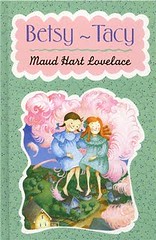
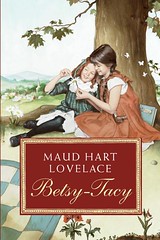
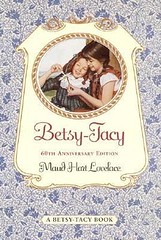
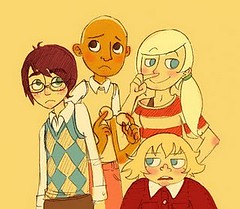
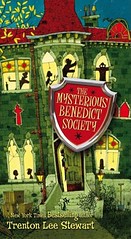

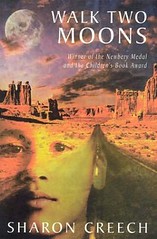
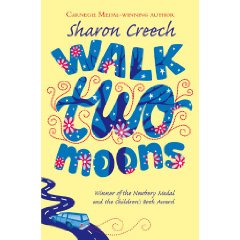
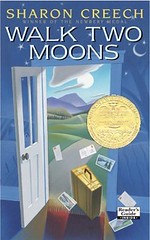
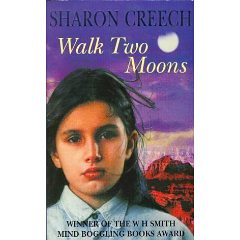
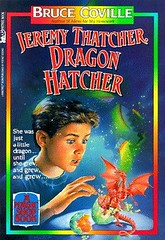
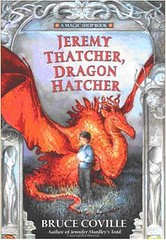
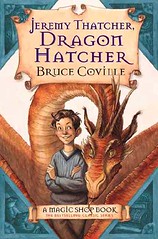
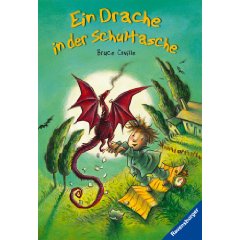
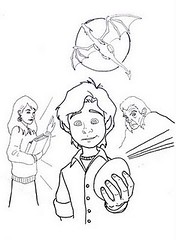
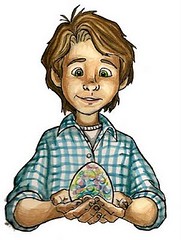
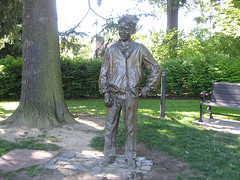
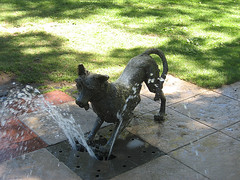
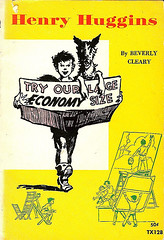
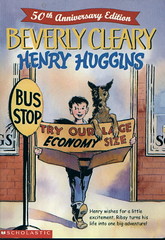
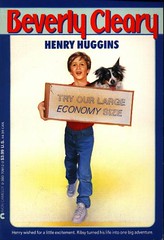
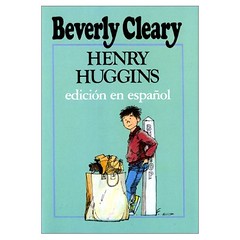


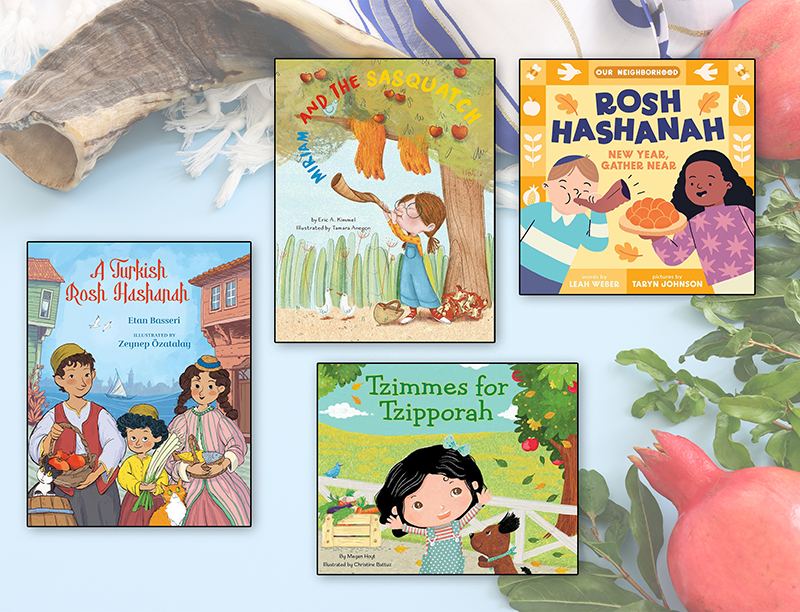
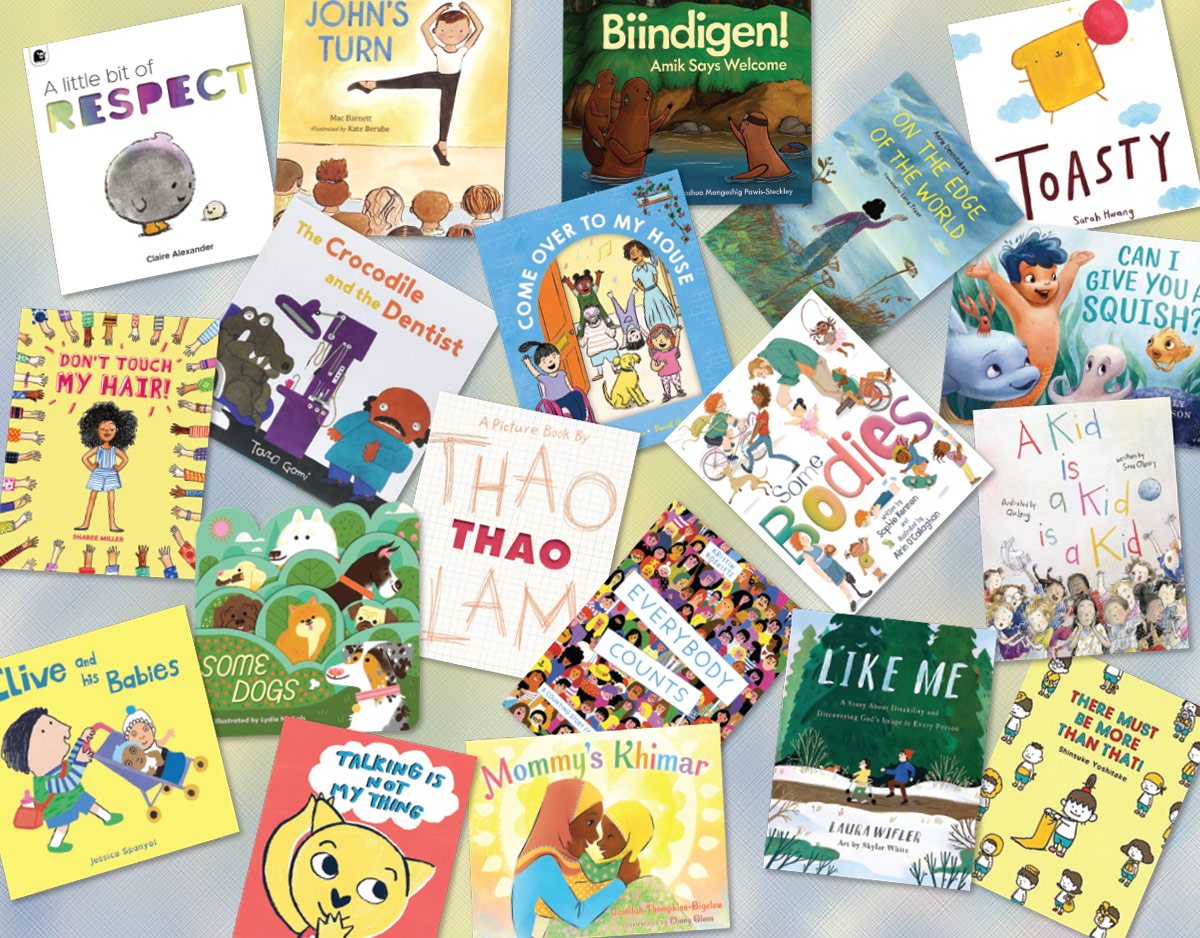
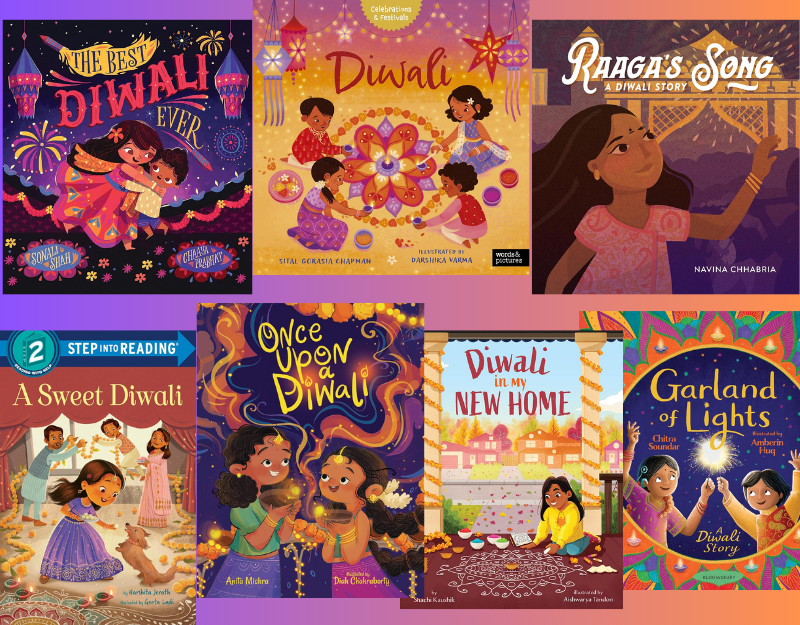
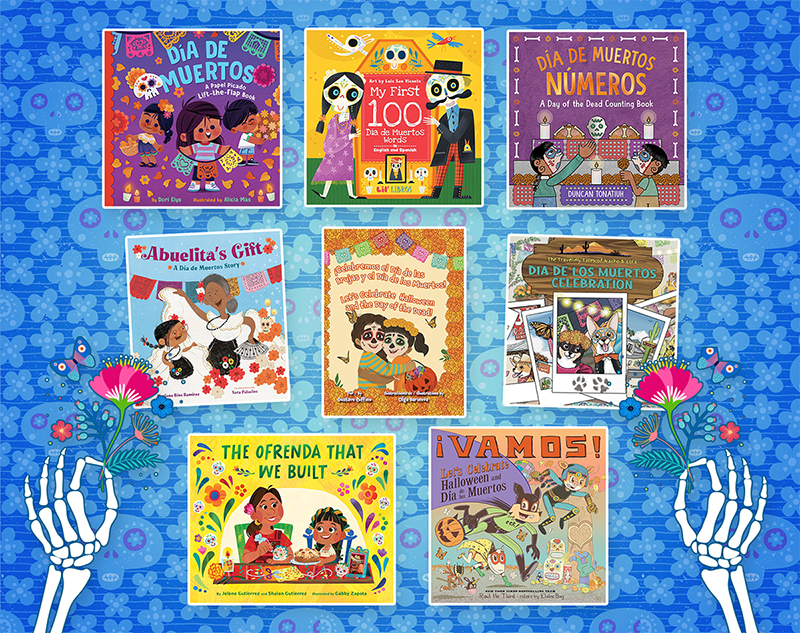
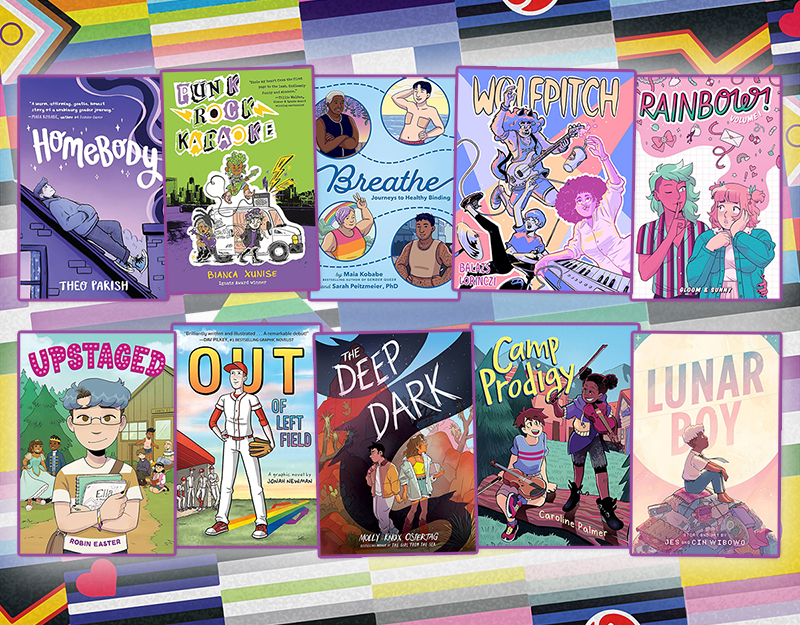
For completists–a data point. I edited JEREMY THATCHER, DRAGON HATCHER for my eponymous imprint at Harcourt.
Loved that book.
Jane Yolen
Yea Henry, you ended up on the cutting room floor in my studio, but I’m so glad others picked you up.
Stats: 2 I adore, 2 I have yet to read, and 1 I wanted to shoot myself in the head, rather than read.
As a Minnesota girl, I read the Betsy Tacy books about a thousand times as a kid. I used to go to sleep at night with one of the books under my pillow whispering to myself about the girls, hoping I’d dream I was playing with them.
It was on my list.
I am so happy Henry made it, so far, the first of my books to do so. My sons and I listened to all the Henry audiobooks last year, which are narrated by Neil Patrick Harris and are awesome. We then had a pilgrimage to the tribute garden in Portland and of course, Klickitat Street. I must admit, I teared up a bit when I saw that sign.
I DO know a Tacy, but she was actually named after the character in the book, a book that her mother (librarian and children’s book guru Therese Bigelow) loved as a child. This Tacy is now a wonderful creative art teacher in the Pacific Northwest. I spent some good times with her at Children’s Literature New England conferences.
How many ways do I love Jeremy Hatcher? I read it over and over to my kids, now grown. And once in a while, I just have to pull it off the shelf and hold it.
xoK
I discovered Betsy-Tacy as an adult as well (and after doing so, I asked both my mother and grandmother about the books, but they were also unfamiliar), and love them. I raced through the first six in a matter of days.
Also, great love for Benedict! It’s one of my favorite hand sells these days.
Hmm. Jeremy Thatcher. I guess not so much of a surprise that a Coville made it into the top 100, as a surprise that it’s this far up in the list.
Yay! Finally one of mine makes the list at #68!!!
My sister lives in Paris and her two boys (seven and five) are growing up French for all intents and purposes. Not wanting them to lose their American roots entirely, I gave them the Henry Huggins books last summer and they are now both rabid fans. The power of Cleary transcends time, space and international borders. I’m giving them HOMER PRICE next, just to see what happens.
Can’t believe I forgot Jeremy Thatcher! That might have been the first chapter book in which my first reading was done in one sitting. One of my most vivid elementary school memories was the day Coville came to visit. I thought it was so amazing that the guy who wrote My Teacher is an Alien and The Monster’s Ring lived just down the road in the town next to ours, all of a sudden authors became real people in my 9 year old mind. What an inspiring guy.
Yay again! I get more excited by books I like that weren’t on my list than ones that WERE there (so far I’ve had only one of those, but I suspect that most of mine that will make it will REALLY make it, while the others won’t at all, anyway). I am excited for The Mysterious Benedict Society. And I read Jeremy Thatcher just a few months ago and loved it. It’s deceptively simple. There’s a lot of incredible stuff going on in that book. I don’t THINK my opinion is THAT swayed by the fact that Bruce Coville had called my own manuscript-in-progress “intriguing” at an SCBWI conference the week before, but I love the man, too.
And Walk Two Moons beat out Catherine Called Birdy AND The Ear the Eye and the Arm for the Medal? BOTH those books were on my Top-20-but-Not-Making-the-Top-10 list! Oh dear, will either of them in fact make this list? (Possibly there’s still hope for the former; the latter is still far-too-regrettably-little-known. I should have bumped it up onto my top 10 list just to compensate. Oh well, then I would have been sad about whatever my number 10 finally turned out to be. I forget what it was now, actually).
YES! “Walk Two Moons”! Finally, one of my favorite books makes the list! This was also one of those Top 15 books that I felt guilty to leave off, so it’s great that at least others found some well-deserved room for it! It’s such a brilliantly written story, the writing is warm and wise, the characters are all so engrossing and the plotting is original as well as fascinatingly multilayered. This is one of the few books that genuinely touched me when I read it, and then did so again when I reread it.
I’m surprised to see “The Mysterious Benedict Society” on the list, but I have to admit that I really enjoyed it when I read it. It was just a really well plotted story, and of course I love the cast of brilliant orphans. If you think that 500 pages simply can’t “just fly by” you need to be introduced to this book.
Thank the gods that no one has managed to get their hands on Maud Lovelace’s books and mangle them the way Kevin Sullivan & Co were allowed to mangle those of her fellow Maud(Montgomery)!
Long after the flavor of the month books on the NY Times bestseller list have crumbled, long after most of the books awarded the Newbery medal have proved themselves far more popular with the adults that gave them the medals than with the kids that had to read them, girls and women (and a few guys too!)will read and love Betsy,Tacy,Tib and the rest of the “crowd”.
I “found” Betsy-Tacy while in my 40s. I think maybe because it was a series- it fell afoul of my local library’s reluctance to put most authors’ series on its shelves (Cleary, Alcott and Montgomery notwithstanding). I was fortunate enough to be able to share it with my daughter at the perfect age for her. Now she says it is her “go to” book for comforting little girls. She brings them on her lap and starts reciting the first chapter. It works like a miracle.
I’ve been aware of Betsy-Tacy for a few decades, but was in my 50s when I finally got around to reading it. Haven’t read any of the sequels yet, but I do intend to.
Walk Two Moons is one of my favourite Newbery winners (and also a book I first read when I was over 50). I was around 13 or so when I first read Henry Huggins, and have reread it several times since; it might have been on my top-ten list if I’d thought of it.
Dear god, that video made me want to gouge my eyes out. SELENA GOMEZ AS BEEZUS??? The words even sounded wrong in the-cute-boy-of-the-month’s mouth. Help us, Jebus. Or should I say Beezus? Ugh.
I read some of the Betsy-Tacy books when I was very young, on the recommendation of my mother, who had loved them. I remember not believing it when the girls had snow in March. I lived in the Seattle area, so I must have been less than six years old, and in my vast experience found that detail incredible! Little did I know…
It really is fascinating to see the “mix” as Betsy describes it. I’ve been thinking about how that mix is reflected in the different way each of us approached the list-making. My office mate, Steven Engelfried, and I did it very differently. He listed his childhood favorites and I decided to go with the books that I’ve loved most in my 38 years as a children’s librarian.(Probably because I thought that no one else would include my most favorite childhood title, Pigtail Pioneer. We’ll see!)
How perfect that Betsy-Tacy and Henry Huggins wound up on the same list! These were the “series” that I read as a child. Happiness was knowing that there were still more Betsy-Tacy books on the “L’ shelf, and that Beverly Cleary was still writing more Henry and Beezus and Ramona books. Whoever mentioned the Neil Patrick Harris audio books was spot on! They are wonderful!
Oops – Henry Huggins was on my top-ten list…. Now I’ll have to go back to my post on this segment of the Top 100 and rewrite it a bit!
And I think A Dragon in the Schoolbag (the German title) is much better than Jeremy Thatcher, Dragon Hatcher.
My daughter and I are very pleased that you found her Tiamat tattoo! As a trained teacher, I am a big fan of kid lit, so to be included in this site is a real treat.
Mary from Unmitigated.typepad.com
It’s so important to draw attention to reading, and attract reluctant readers to it,especially boys. In fact, I’ve recently completed a feature magazine article on this subject that came out in October, “Help for Struggling, Reluctant Readers.”
I grew up as a reluctant reader, in spite of the fact that my father published over 70 books. Now I write action-adventures & mysteries, especially for tween boys, that avid boy readers and girls enjoy just as much.
My blog, Books for Boys @ booksandboys.blogspot.com is dedicated to drawing attention to the importance of reading. And my new book, Lost Island Smugglers – first in the Sam Butler Adventure Series – is coming out in June.
Keep up your good work.
Max Elliot Anderson
I listened to Jeremy Thatcher on audiobook last week; first time ever. It was really excellent. I really love Bruce Coville and need to do some serious booktalking. (Have you ever listened to his Dragonslayer musical soundtrack? So cool!)
Also, my co-blogger Ivy (3) and I were in the library the other day, and she pulled down Henry Huggins from the shelf. Never picked out a chapter book before. I said, “That one is pretty long. Are you sure you want that? How about this one (Cat Club, Averill, awesome)?” Ivy: “Sure. I also want this one.” Okay!